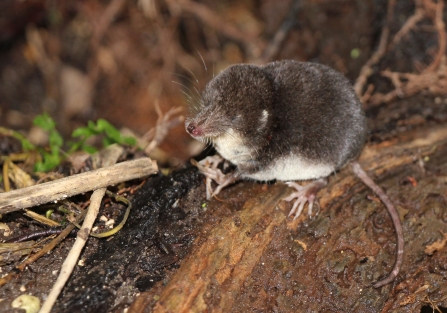I was reminded of one such occasion, the other day, when I caught a fleeting glimpse of one of our least seen aquatic mammals, the water shrew. This glimpse stirred a memory from a few years ago when I was watching the world go by....
I was sat under the shade of an old willow, its limbs all tortured into woven shapes, as if reaching out to feel the trickle of the clear stream water that flowed in front of us. As I let my mind wander with the babbling sound the water made as it flowed over the gravel below, my eyes caught a movement across and to my right. Years of watching wildlife has taught me to resist the instinctive urge to move my head towards the unfolding scene, but to let my eyes focus in and stay still.
My patience rewarded as a dark black velvety figure came into view. Its nose was twitching vigorously, long slender whiskers working in unison, helping to locate a meal, as this little wetland mammal has tiny almost redundant jet black eyes. It worked its way jerkily down the bankside, disappearing behind a blanket of green water cress only to re-appear closer to my streamside seat.


